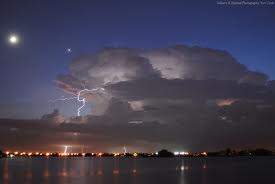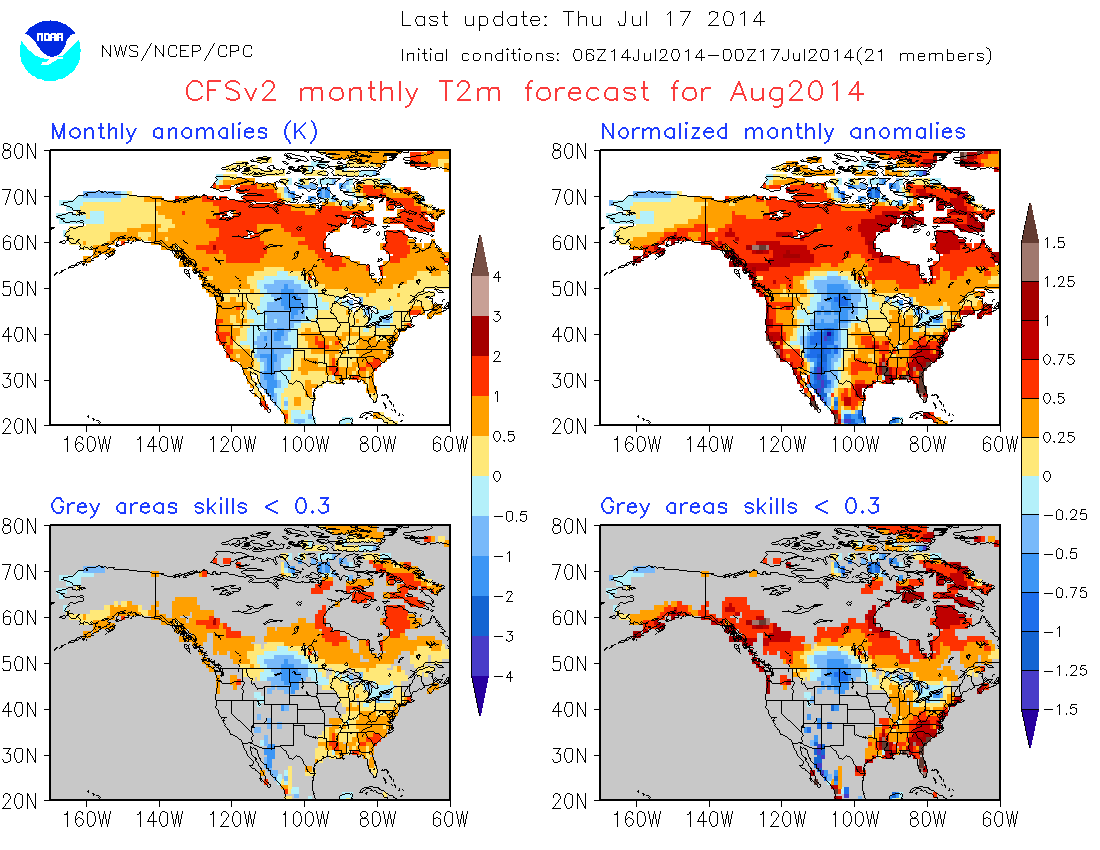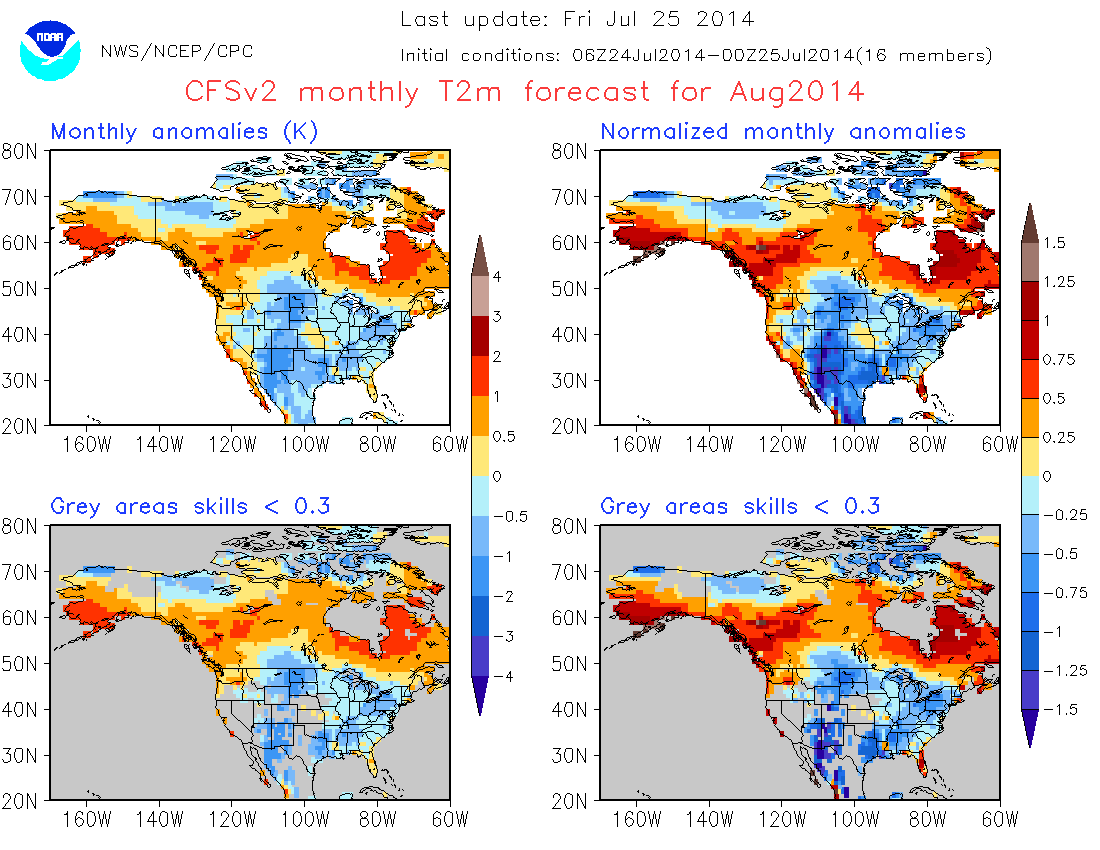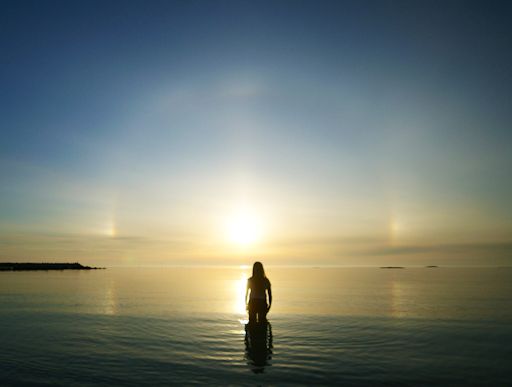Thursday afternoon
No problems with our weather recently and perhaps just a few bumps in the road over the next few days. The basic features have remained the same. Weak upper air disturbances will drift over the region late tomorrow through Sunday, but the main moisture source will stay far south and east of our area. So, the already weak upper systems shouldn’t be able to produce some light and scattered showers. At the moment, the most likely time for any showers looks to be Friday night. Skies should be partly cloudy with highs in the upper 80’s and lows creeping up to the 70-72 range. Highest rain probability will be 30% for Friday night.
Climate controversy continues
Hard on the heels of my comments yesterday concerning Earth’s warming during the 20th century. Turns out that the warming (probably aided somewhat by carbon dioxide) was highly beneficial to mankind. Our government scientists won’t tell us that because it ruins the story they’ve been trying to sell us – that carbon dioxide is evil and will destroy us. Fact is carbon dioxide has been crucial to the development and maintenance of life on Earth. Without it, we wouldn’t be here.
Well, today’s report on www.wattsupwiththat.com shows that the “climate crisis” is a variable thing…and it runs on roughly a 40-year cycle. A warming Earth was the big concern for about the first 40 years of the century. Cooling began in the 1940’s and the “an ice age is coming” crowd got very loud in the early 1970 ‘s. Then, warming resumed and by the late 1980’s the cry “we’re killing ourselves with carbon dioxide” started to become very loud. And it’s still going strong… in spite of the fact that Earth has not warmed this century. By my reasoning, we should be back to the ice age warnings within the next ten years!.
Here’s that data chart from www.wattsupwiththat.com
- 1895 – Geologists Think the World May Be Frozen Up Again – New York Times, February 1895
- 1902 – “Disappearing Glaciers…deteriorating slowly, with a persistency that means their final annihilation…scientific fact…surely disappearing.” – Los Angeles Times
- 1912 – Prof. Schmidt Warns Us of an Encroaching Ice Age – New York Times, October 1912
- 1923 – “Scientist says Arctic ice will wipe out Canada” – Professor Gregory of Yale University, American representative to the Pan-Pacific Science Congress, – Chicago Tribune
- 1923 – “The discoveries of changes in the sun’s heat and the southward advance of glaciers in recent years have given rise to conjectures of the possible advent of a new ice age” – Washington Post
- 1924 – MacMillan Reports Signs of New Ice Age – New York Times, Sept 18, 1924
- 1929 – “Most geologists think the world is growing warmer, and that it will continue to get warmer” – Los Angeles Times, in Is another ice age coming?
- 1932 – “If these things be true, it is evident, therefore that we must be just teetering on an ice age” – The Atlantic magazine, This Cold, Cold World
- 1933 – America in Longest Warm Spell Since 1776; Temperature Line Records a 25-Year Rise – New York Times, March 27th, 1933
- 1933 – “…wide-spread and persistent tendency toward warmer weather…Is our climate changing?” – Federal Weather Bureau “Monthly Weather Review.”
- 1938 – Global warming, caused by man heating the planet with carbon dioxide, “is likely to prove beneficial to mankind in several ways, besides the provision of heat and power.”– Quarterly Journal of the Royal Meteorological Society
- 1938 – “Experts puzzle over 20 year mercury rise…Chicago is in the front rank of thousands of cities thuout the world which have been affected by a mysterious trend toward warmer climate in the last two decades” – Chicago Tribune
- 1939 – “Gaffers who claim that winters were harder when they were boys are quite right… weather men have no doubt that the world at least for the time being is growing warmer” – Washington Post
- 1952 – “…we have learned that the world has been getting warmer in the last half century” – New York Times, August 10th, 1962
- 1954 – “…winters are getting milder, summers drier. Glaciers are receding, deserts growing” – U.S. News and World Report
- 1954 – Climate – the Heat May Be Off – Fortune Magazine
- 1959 – “Arctic Findings in Particular Support Theory of Rising Global Temperatures” – New York Times
- 1969 – “…the Arctic pack ice is thinning and that the ocean at the North Pole may become an open sea within a decade or two” – New York Times, February 20th, 1969
- 1969 – “If I were a gambler, I would take even money that England will not exist in the year 2000″ — Paul Ehrlich (while he now predicts doom from global warming, this quote only gets honorable mention, as he was talking about his crazy fear of overpopulation)
- 1970 – “…get a good grip on your long johns, cold weather haters – the worst may be yet to come…there’s no relief in sight” – Washington Post
- 1974 – Global cooling for the past forty years – Time Magazine
- 1974 – “Climatological Cassandras are becoming increasingly apprehensive, for the weather aberrations they are studying may be the harbinger of another ice age” – Washington Post
- 1974 – “As for the present cooling trend a number of leading climatologists have concluded that it is very bad news indeed” – Fortune magazine, who won a Science Writing Award from the American Institute of Physics for its analysis of the danger
- 1974 – “…the facts of the present climate change are such that the most optimistic experts would assign near certainty to major crop failure…mass deaths by starvation, and probably anarchy and violence” – New York Times
Cassandras are becoming increasingly apprehensive, for the weather aberrations they are studying may be the harbinger of another ice age
- 1975 – Scientists Ponder Why World’s Climate is Changing; A Major Cooling Widely Considered to Be Inevitable – New York Times, May 21st, 1975
- 1975 – “The threat of a new ice age must now stand alongside nuclear war as a likely source of wholesale death and misery for mankind” Nigel Calder, editor, New Scientist magazine, in an article in International Wildlife Magazine
- 1976 – “Even U.S. farms may be hit by cooling trend” – U.S. News and World Report
- 1981 – Global Warming – “of an almost unprecedented magnitude” – New York Times
- 1988 – I would like to draw three main conclusions. Number one, the earth is warmer in 1988 than at any time in the history of instrumental measurements. Number two, the global warming is now large enough that we can ascribe with a high degree of confidence a cause and effect relationship to the greenhouse effect. And number three, our computer climate simulations indicate that thegreenhouse effect is already large enough to begin to effect the probability of extreme events such as summer heat waves. – Jim Hansen, June 1988 testimony before Congress, see His later quote and His superior’s objection for context
- 1989 -“On the one hand, as scientists we are ethically bound to the scientific method, in effect promising to tell the truth, the whole truth, and nothing but – which means that we must include all doubts, the caveats, the ifs, ands and buts. On the other hand, we are not just scientists but human beings as well. And like most people we’d like to see the world a better place, which in this context translates into our working to reduce the risk of potentially disastrous climate change. To do that we need to get some broad based support, to capture the public’s imagination. That, of course, means getting loads of media coverage. So we have to offer up scary scenarios, make simplified, dramatic statements, and make little mention of any doubts we might have. This “double ethical bind” we frequently find ourselves in cannot be solved by any formula. Each of us has to decide what the right balance is between being effective and being honest. I hope that means being both.” – Stephen Schneider, lead author of the Intergovernmental Panel on Climate Change, Discover magazine, October 1989
- 1990 – “We’ve got to ride the global warming issue. Even if the theory of global warming is wrong, we will be doing the right thing – in terms of economic policy and environmental policy” – Senator Timothy Wirth
- 1993 – “Global climate change may alter temperature and rainfall patterns, many scientists fear, with uncertain consequences for agriculture.” – U.S. News and World Report
- 1998 – No matter if the science [of global warming] is all phony . . . climate change [provides] the greatest opportunity to bring about justice and equality in the world.” —Christine Stewart, Canadian Minister of the Environment, Calgary Herald, 1998
- 2001 – “Scientists no longer doubt that global warming is happening, and almost nobody questions the fact that humans are at least partly responsible.” – Time Magazine, Monday, Apr. 09, 2001
- 2003 – Emphasis on extreme scenarios may have been appropriate at one time, when the public and decision-makers were relatively unaware of the global warming issue, and energy sources such as “synfuels,” shale oil and tar sands were receiving strong consideration” – Jim Hansen, NASA Global Warming activist, Can we defuse The Global Warming Time Bomb?, 2003
- 2006 – “I believe it is appropriate to have an over-representation of factual presentations on how dangerous it is, as a predicate for opening up the audience to listen to what the solutions are, and how hopeful it is that we are going to solve this crisis.” — Al Gore, Grist magazine, May 2006
- 2006 – “It is not a debate over whether the earth has been warming over the past century. The earth is always warming or cooling, at least a few tenths of a degree…” — Richard S. Lindzen, the Alfred P. Sloan professor of meteorology at MIT
- 2006 – “What we have fundamentally forgotten is simple primary school science. Climate always changes. It is always…warming or cooling, it’s never stable. And if it were stable, it would actually be interesting scientifically because it would be the first time for four and a half billion years.” —Philip Stott, emeritus professor of bio-geography at the University of London
- 2006 – “Since 1895, the media has alternated between global cooling and warming scares during four separate and sometimes overlapping time periods. From 1895 until the 1930’s the media peddled a coming ice age. From the late 1920’s until the 1960’s they warned of global warming. From the 1950’s until the 1970’s they warned us again of a coming ice age. This makes modern global warming the fourth estate’s fourth attempt to promote opposing climate change fears during the last 100 years.” – Senator James Inhofe, Monday, September 25, 2006
- 2007– “I gave a talk recently (on fallacies of global warming) and three members of the Canadian government, the environmental cabinet, came up afterwards and said, ‘We agree with you, but it’s not worth our jobs to say anything.’ So what’s being created is a huge industry with billions of dollars of government money and people’s jobs dependent on it.” – Dr. Tim Ball, Coast-to-Coast, Feb 6, 2007
- 2008 – “Hansen was never muzzled even though he violated NASA’s official agency position on climate forecasting (i.e., we did not know enough to forecast climate change or mankind’s effect on it). Hansen thus embarrassed NASA by coming out with his claims of global warming in 1988 in his testimony before Congress” – Dr. John S. Theon, retired Chief of the Climate Processes Research Program at NASA, see above for Hansen quotes
Section updated by Anthony:
- 2009 – Climate change: melting ice will trigger wave of natural disasters. Scientists at a London conference next week will warn of earthquakes, avalanches and volcanic eruptions as the atmosphere heats up and geology is altered. Even Britain could face being struck by tsunamis – “Not only are the oceans and atmosphere conspiring against us, bringing baking temperatures, more powerful storms and floods, but the crust beneath our feet seems likely to join in too,” – Professor Bill McGuire, director of the Benfield Hazard Research Centre, at University College London, – The Guardian, Sep 2009.
- 2010 – What Global Warming Looks Like. It was more than 5°C (about 10°F) warmer than climatology in the eastern European region including Moscow. There was an area in eastern Asia that was similarly unusually hot. The eastern part of the United States was unusually warm, although not to the degree of the hot spots in Eurasia. James Hansen – NASA GISS, August 11, 2010.
-
2011 – Where Did Global Warming Go? “In Washington, ‘climate change’ has become a lightning rod, it’s a four-letter word,” said Andrew J. Hoffman, director of the University of Michigan’s Erb Institute for Sustainable Development. – New York Times, Oct 15, 2011.
- 2012 – Global warming close to becoming irreversible-scientists. “This is the critical decade. If we don’t get the curves turned around this decade we will cross those lines,” said Will Steffen, executive director of the Australian National University’s climate change institute, speaking at a conference in London. Reuters, Mar 26, 2012
- 2013 – Global-warming ‘proof’ is evaporating. The 2013 hurricane season just ended as one of the five quietest years since 1960. But don’t expect anyone who pointed to last year’s hurricanes as “proof” of the need to act against global warming to apologize; the warmists don’t work that way. New York Post, Dec 5, 2013
- 2014 – Climate change: It’s even worse than we thought. Five years ago, the last report of the Intergovernmental Panel on Climate Change painted a gloomy picture of our planet’s future. As climate scientists gather evidence for the next report, due in 2014, Michael Le Page gives seven reasons why things are looking even grimmer. – New Scientist (undated in 2014)
The actual Global Warming Advocates’ chart, overlaid on the “climate change” hysterics of the past 120 years. Not only is it clear that they take any change and claim it’s going to go on forever and kill everyone, but notice that they even sometimes get the short-term trend wrong…
Worse still, notice that in 1933 they claim global warming has been going on for 25 years…the entire 25 years they were saying we were entering an ice age. And in 1974, they say there has been global cooling for 40 years…the entire time of which they’d been claiming the earth was getting hotter! Of course NOW they are talking about the earth “warming for the past century”, again ignoring that they spent much of that century claiming we were entering an ice age.
The fact is that the mean temperature of the planet is, and should be, always wavering up or down, a bit, because this is a natural world, not a climate-controlled office.





